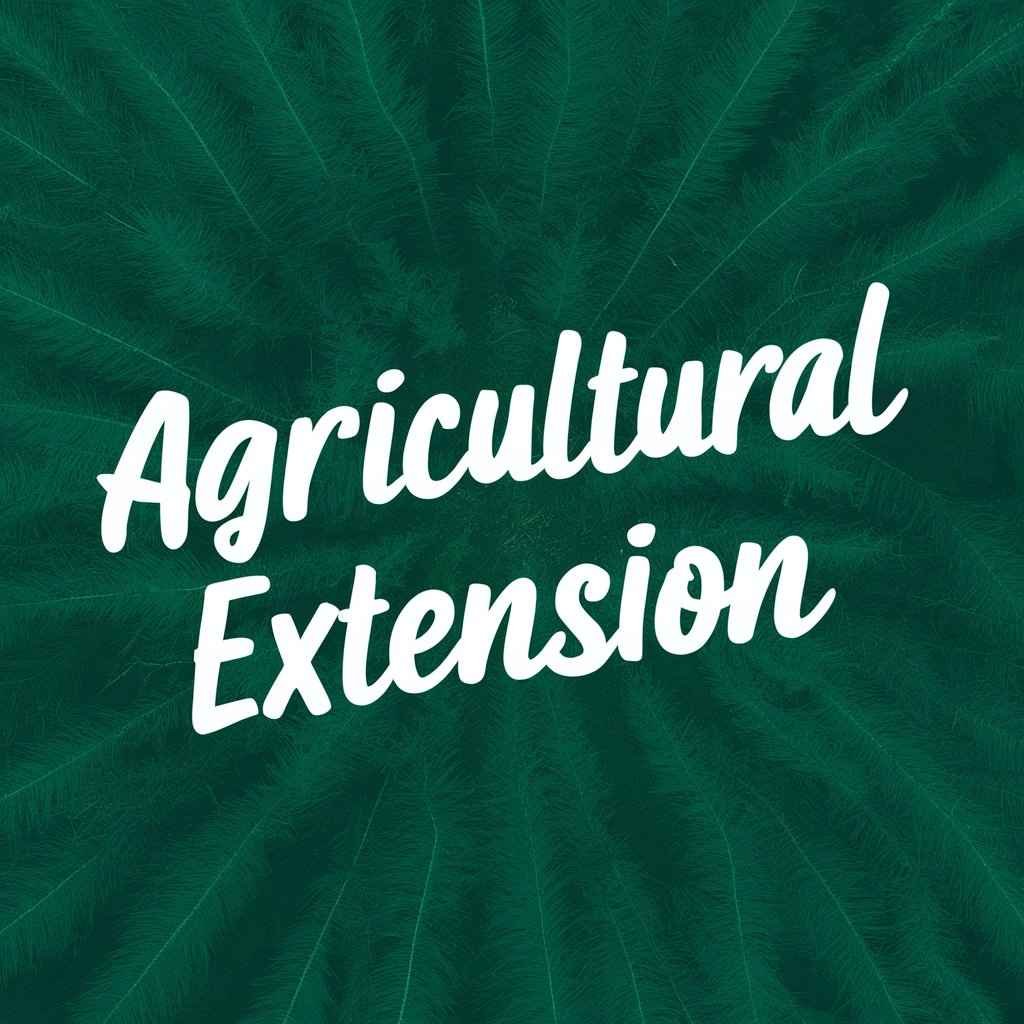Agricultural extension in Nepal has progressed tremendously since its inception. Its history dates back to the 1950s, when the Department of Agriculture was established with the goal of increasing agricultural output through the diffusion of information and technology. Early attempts were characterized by a top-down approach, with agricultural officers providing training and doing field visits. Over time, the strategy has evolved into a more participatory and demand-driven model, emphasizing the involvement of local communities and farmers in decision-making processes.
Table of Contents
Introduction to Agricultural Extension in Nepal

Agricultural extension is the distribution of research-based knowledge and the provision of educational services aimed at improving farmer skills and practices. This notion is critical for bridging the gap between agricultural research and practical farming, allowing farmers to adopt new technologies, increase production, and assure sustainable agricultural practices.
Globally, agricultural extension has evolved dramatically during the last few decades. Initially, it concentrated on providing technical assistance to farmers through government-sponsored programs. However, as new technologies and agricultural landscapes have evolved, the scope of agricultural extension has grown to cover a broader range of services such as market information, financial guidance, and climate-smart agriculture approaches. This progression highlights the need of agricultural extension in responding to and conquering today’s agricultural issues.
In the context of Nepal, agricultural extension is especially important. Agriculture is an important part of the country’s economy, contributing significantly to GDP and employing a big proportion of the workforce. Nepal’s diversified geography and climatic circumstances give unique agricultural problems and opportunities. Effective agricultural extension services can assist farmers in navigating these challenges by offering localized, relevant, and timely information and support.
Historical Development of Agricultural Extension in Nepal
The history of agricultural extension in Nepal dates back to the mid-twentieth century, when the country’s approach to agricultural methods changed dramatically. Early endeavors centered on government-run programs aimed at increasing agricultural output. One of the watershed milestones in this timeline was the formation of the Department of Agriculture in 1951, which played an important role in institutionalizing agricultural extension services in Nepal.
In later decades, international organizations and donors provided significant support to Nepal’s agricultural extension services. The Food and Agriculture Organization (FAO) and the United States Agency for International Development (USAID) offered technical and financial support. These agreements permitted the adoption of innovative agricultural techniques and practices, contributing to Nepal’s agricultural modernization.
The Green Revolution had a tremendous impact on agricultural extension in Nepal in the 1960s and 1970s. This time period saw the development of high-yielding crop types, improved irrigation techniques, and the widespread use of chemical fertilizers and pesticides. These developments significantly increased agricultural output and were accompanied by massive training and extension programs designed to educate farmers about these new technology.
As Nepal entered the later half of the twentieth century and early twenty-first century, there was a clear shift from traditional to more contemporary ways of agricultural extension. Technological improvements, such as the application of information and communication technology (ICT) in agriculture, began to play an important role.
Current Approaches to Agricultural Extension in Nepal
In modern Nepal, agricultural extension services have expanded greatly to meet the various and dynamic demands of the farming community. A variety of models are used to spread information and skills, with the Training and Visit (T&V) system, Farmer Field Schools (FFS), and ICT-based techniques being the most prominent.
The Training and Visit (T&V) approach, which focuses on frequent training sessions and field visits, has helped farmers improve their technical capabilities. This structured and methodical strategy guarantees that extension agents maintain regular touch with farmers and provide timely and appropriate information. However, the T&V system has been supplemented by Farmer Field Schools (FFS), which encourage interactive learning. FFS focuses on experiential learning, where farmers learn by doing, frequently through demonstration plots and group
ICT-based initiatives have also gained popularity, using technology to bridge the gap between extension services and farmers. Mobile phones, internet platforms, and social media are rapidly being utilized to disseminate information, provide market updates, and conduct virtual training sessions. These digital tools make agricultural extension services more accessible and efficient, reaching even the most remote places.
Both government institutions and non-governmental organizations (NGOs) play important roles in Nepal’s agricultural extension landscape. Governmental authorities, such as the Department of Agriculture, carry out national policies and programs, but non-governmental organizations (NGOs) frequently focus on grassroots interventions, providing innovation and flexibility to extension services. The private sector, which includes agribusinesses and agro-input companies, also participates by offering specialized knowledge and services, particularly in seed distribution and pest management.
Furthermore, contemporary extension efforts in Nepal are including more sustainable agricultural practices and climate-smart agriculture. These approaches seek to increase productivity while maintaining environmental sustainability and resilience to climate change. Community-based techniques are also widely used, encouraging local leadership and collective action among farmers. These initiatives, which use cooperatives and farmer groups to foster shared learning and resource management, ensure that agricultural extension services are both successful and inclusive.
Challenges and Future Directions
Agricultural extension services in Nepal encounter numerous constraints that limit their efficacy. One of the most pressing concerns is a lack of resources. Limited financing impedes the provision of key services and the execution of comprehensive programs. This financial shortage frequently results in inadequate infrastructure, such as badly maintained roads, insufficient storage facilities, and a lack of dependable transportation, which impedes the timely supply of agricultural inputs and information to farmers.
Another key difficulty is the restricted availability of current technologies. Many farmers in Nepal continue to use traditional farming methods due to a lack of expertise and resources to implement new technologies. This technical gap limits productivity and the ability to increase crop yield. Furthermore, farmer education and training programs are frequently insufficient, leaving farmers lacking the skills and information required to properly employ sophisticated agricultural methods.
Gender differences also present an issue in the agriculture sector. Women, who make up a large section of the agricultural workforce, frequently have less access to resources, training, and decision-making possibilities than their male colleagues. Addressing these gaps is critical to increasing agricultural productivity and sustainability in Nepal.
The impact of climate change complicates the situation. Unpredictable weather patterns, increased frequency of extreme weather events, and changing climate conditions all have an impact on crop output and lives. Farmers require reliable climatic information and adaptive measures to mitigate the negative effects.
Frequently Asked Question(FAQ)
What is agricultural extension?
Agricultural extension services and systems provide farmers with knowledge, information, and technologies to help them improve their agricultural practices and productivity. It include training farmers about new techniques, pest management, crop rotation, and sustainable agricultural practices.
When did agricultural extension services begin in Nepal?
Nepal’s agricultural extension services began in the 1950s with the formation of the Department of Agriculture. The initial aim was on enhancing agricultural productivity through the spread of modern farming techniques and scientific information.
Related Articles

